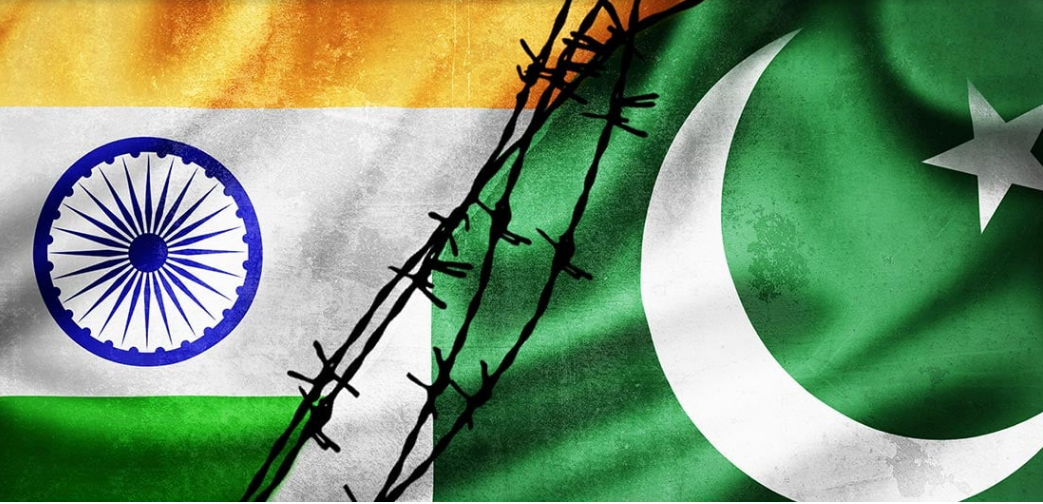Editorial Note: This blog post was written after the operation “Sindoor”.
–Written by Sunny Anand, UNIVERSITY OF ALLAHABAD, India
Email: sunnyanand639449@gmail.com
The volatile relationship between India and Pakistan has once again come under strain following the horrific terrorist attack in Pahalgam, Jammu and Kashmir, on April 22, 2025. This act of violence, which killed 26 people, including 25 tourists and a local Muslim pony operator, has not only reignited deep-seated hostilities between the two nations but also triggered strong diplomatic and strategic reactions from India.
The attack, carried out by five heavily armed militants in military-style uniforms, targeted civilians in the picturesque Baisaran Valley, a popular destination known for its natural beauty and spiritual significance. It coincided with the bustling tourist season and disrupted the atmosphere of peace, joy, and economic activity the town thrives on. The Resistance Front (TRF), believed to be a proxy of Pakistan-based Lashkar-e-Taiba, initially claimed responsibility, but later retracted its statement citing a “communication glitch.”
Unfolding Strategic Motives
Several possible motives have been identified behind the attack. Internally, Pakistan’s military establishment appears to be reasserting its relevance amidst a growing peace sentiment among Pakistani youth, influenced by Indian culture and entertainment. The military’s renewed emphasis on the two-nation theory signals a retreat into ideological justifications for ongoing conflict.
Another key factor is India’s infrastructural and economic growth in Kashmir following the abrogation of Article 370. Improved development has reduced support for terrorism, threatening the influence of extremist groups that rely on instability. Disrupting Kashmir’s booming tourism sector appears to be a deliberate aim of the attackers, undermining the region’s economic revival.
Pakistan may also see the current geopolitical environment as advantageous. With India undergoing a military personnel shift due to the Agniveer scheme and being focused on its development goals for 2047, Pakistan could view this as an opportune time to engage in proxy warfare. Furthermore, support from the U.S. in the form of military aid adds another layer of strategic complexity. Some observers suggest that the U.S. might be subtly encouraging regional instability to curb the growing cooperation between India and China.
India’s Strong Response
India responded swiftly and assertively. Measures included suspending the Indus Water Treaty, expelling Pakistani defense staff from its high commission, and suspending visas for Pakistani nationals. High-level diplomatic downgrades and tightening of cross-border movement underscored India’s hard stance.
Prime Minister Modi gave the Indian armed forces complete autonomy to determine the mode, targets, and timing of retaliation. Ceremonial gestures, such as the handshake during the retreat ceremony at Attari, were also halted, signaling a significant shift in India’s posture.
Evaluating the Impact
Despite these moves, questions remain about their effectiveness. For instance, suspending the Indus Water Treaty might take decades to implement due to infrastructural limitations. Similarly, downsizing embassies and halting visas may carry limited punitive weight, considering minimal trade and exchange between the two countries.
Pakistan, in turn, reduced India’s high commission staff and raised concerns on international platforms, presenting itself as a victim of Indian aggression. Cyberattacks on Indian institutions have also been attributed to Pakistan-based groups, reflecting the multifaceted nature of this conflict.
Charting a Strategic Path Forward
India must walk a fine line between demonstrating resolve and avoiding full-scale conflict. Strategic restraint combined with international diplomacy may help isolate Pakistan and expose its support for terrorism. Other critical steps are enhancing intelligence operations, strengthening cybersecurity, and reassessing the country’s nuclear doctrine.
India could also consider covert operations to support internal dissent within Pakistan, such as aiding the Baloch Liberation Organization, and bolstering Afghanistan’s stance on border issues with Pakistan. At the same time, forging stronger ties with China, Russia, and OPEC nations would help neutralize Pakistani narratives and reinforce India’s image as a stable, inclusive democracy.
Importantly, India must counter religious polarization domestically. By promoting unity and enforcing laws against hate speech, it can strengthen its societal fabric and reduce the efficacy of Pakistan’s attempts to exploit internal divisions.
Conclusion
The Pahalgam attack serves as a grim reminder of the fragile peace in the region. While India must remain vigilant and assertive, it must keep sight of its long-term goals: economic development, regional stability, and international standing. A measured yet resolute approach—backed by strategic foresight, diplomatic pressure, and internal resilience—can help India emerge stronger from this challenge.
Disclaimer “The authors are solely responsible for the authenticity of the facts and figures mentioned. FGS is merely a platform provider and does not endorse or express any opinion on the content.”

